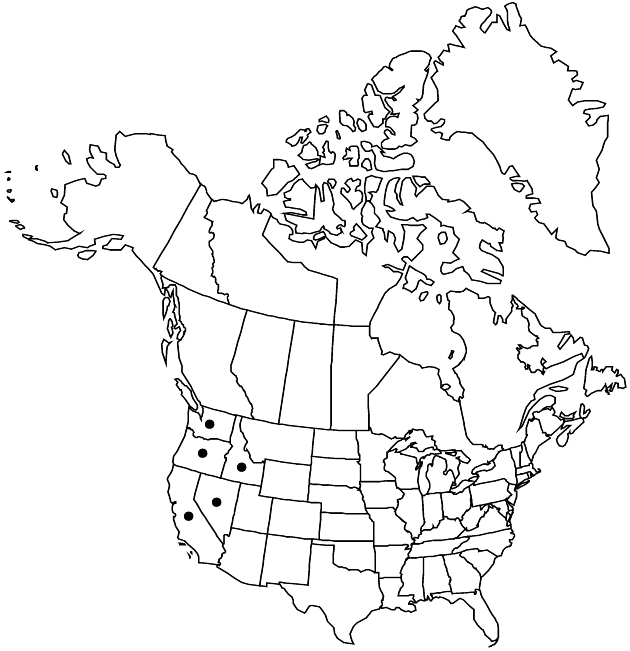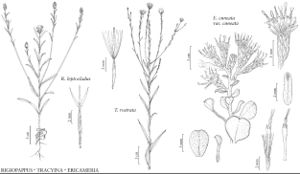Difference between revisions of "Rigiopappus leptocladus"
Proc. Amer. Acad. Arts 6: 548. 1865.
IllustratedEndemic
Treatment appears in FNA Volume 20. Treatment on page 49.
imported>Volume Importer |
imported>Volume Importer |
||
| Line 52: | Line 52: | ||
|publication year=1865 | |publication year=1865 | ||
|special status=Illustrated;Endemic | |special status=Illustrated;Endemic | ||
| − | |source xml=https:// | + | |source xml=https://bitbucket.org/aafc-mbb/fna-data-curation/src/2e0870ddd59836b60bcf96646a41e87ea5a5943a/coarse_grained_fna_xml/V19-20-21/V20_72.xml |
|tribe=Asteraceae tribe Astereae | |tribe=Asteraceae tribe Astereae | ||
|genus=Rigiopappus | |genus=Rigiopappus | ||
Latest revision as of 21:05, 5 November 2020
Leaf blades mostly 9–30+ × 1–2(–5+) mm. Peduncles often wiry, ± hirsutulous to pilosulous near heads. Involucres 4–7+ mm. Ray corollas: tubes 1.5–2+ mm, laminae narrowly elliptic, 0.3–1 mm. Disc corollas: tubes 0.2–0.4 mm, throats 1–1.5 mm, lobes 0.1–0.3 mm. Cypselae 4–5 mm; pappi 1–4+ mm or much reduced (rays). 2n = 18.
Phenology: Flowering Apr–Jul.
Habitat: Grassy sites, chaparral, pine forests, sagebrush scrub
Elevation: 100–1600(–2300) m
Distribution

Calif., Idaho, Nev., Oreg., Wash.
Discussion
Selected References
None.
Lower Taxa
None.
